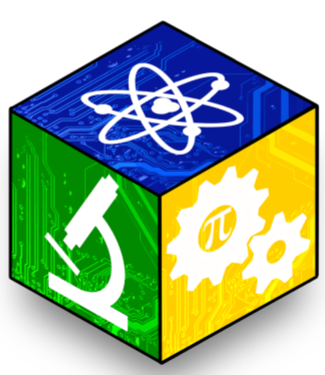Fair Categories
Regular Fair Categories
The Fair has two major divisions, the Life Sciences and the Physical Sciences. Life science projects include behavioral and social sciences, biochemistry, botany, environmental sciences, medicine and health, microbiology and zoology. Physical science projects encompass chemistry, computer science, earth and space sciences, engineering, mathematics and physics.
Each division is further divided by grade with a additional categories for team projects, for a total of 10 categories. For major awards, a project will only be judged against projects in the same category. For example, Grade 7 & 8 Team projects are only judged against 7 & 8 Team projects.
Awards will be presented in each of the ten regular Fair categories. The number of awards is determined from the number of entrants in the category and generally range from 10 to 20. The top four high school projects, two from Physical Sciences and two from Life Sciences, win all-expense-paid trips to compete at the International Science and Engineering Fair, ISEF*.
*Team projects are limited to 3 students.
Table of Major Division Category codes and project numbers
| Project Number |
Major Category |
CSF Code |
|---|---|---|
| 1001 - 1999 | Life Team | LT |
| 2001 - 2499 | Life 7 | L7 |
| 2501 - 2999 | Life 8 | L8 |
| 3001 - 3499 | Life Senior (9 - 12) | LS |
| 3501 - 3999 | Life Sr Team | PST |
| 4001 - 4999 | Phy Team | PT |
| 5001 - 5499 | Phy 7 | P7 |
| 5501 - 5999 | Phy 8 | P8 |
| 6001 - 6499 | Phy Senior (9 - 12) | PS |
| 6501 - 6999 | Phy Sr Team | PST |
Major Category Awards Sponsors
- Life Sciences Awards
Monetary awards, trophies, and medallions for top winners and/or recognition plaques for all Life Sciences finalists. - Physical Sciences Awards
Monetary awards, trophies, and medallions for top winners and/or recognition plaques for all Physical Science finalists. - Biotechnology Awards
The top high school project, individual or team, will receive an all-expense-paid trip to compete at the International Science and Engineering Fair. - Urban School Challenge
7th – 12th grade students from public schools in the Connecticut Priority School District Program compete against one another for major prizes. Top high school project either individual or team wins the opportunity to compete in the International Science & Engineering Fair. Top Middle School Project wins a week at Project Oceanology’s Ocean Camp. - Engineering Awards
For projects in the disciplines of electrical, mechanical, electro-optical, and optical engineering. Criteria include the demonstration of good engineering practices in the development of working hardware. Major cash award awards and plaques. The top high school project, individual or team, will receive an all-expense-paid trip to compete at the International Science and Engineering Fair.
Special Categories
Projects at the Fair are also considered for awards in special categories. Projects are selected for these categories by a separate panel of judges than the regular category judges.
- Applied Technology
For projects applying technology to demonstrate a practical solution to a stated problem or by creating a functionally interesting use of technology. - Mathematics Awards
For projects demonstrating the application of mathematics or theoretical mathematics. Category is run by the Associated Teachers of Mathematics In Connecticut. Awards include cash prizes and trophies. - Computational Biology and Bioinformatics
For projects that focus on the discipline and techniques of computer science and mathematics as they relate to biological systems. This includes the development and application of data-analytical and theoretical methods, mathematical modeling and computational simulation techniques to the study of biological, behavior, and social systems. - Computer Science Awards
For projects which deal with computer architecture or software development directed towards better computers and software. Awards include cash prizes and trophies. - Environmental Science Awards
For projects in environmental science and observational behavioral studies of animals in the environment. - Alternative Renewable Energy Awards
For projects that address concepts in clean renewable/sustainable energy. - Future Sustainability Awards
For energy, engineering, and environmental high and middle school projects addressing future sustainability of our planet. - Women In Science & Engineering Awards
For middle and high school projects by young women that show outstanding achievement in science and engineering. - University Scholarships
Quinnipiac University, University of Connecticut, University of Hartford, and University of New Haven provide scholarships to attend their respective schools - Technical High School Awards- For Excellence In Applied Technology and Creative Engineering Solutions. Students must attend a technical high school to be considered for this category.
- Thermo Fisher Scientific Junior Innovators Challenge
Middle school top winners in all categories receive invitations to participate in the Thermo Fisher Scientific Junior Innovators Challenge national middle school competition. - Special Awards
There are also more than 100 special awards presented by professional societies and businesses in a wide variety of subject areas. The selection and evaluation of projects for the special awards are made by a team of judges acting for the organization sponsoring the award.
What do the ribbons on projects mean?
Regular and special awards will be noted by ribbons placed on the projects. Recognizing that the projects at the Connecticut Science Fair represent the best from their school or local fair, relative rankings within the fair are further noted by:
| Third Honors | up to the 40th percentile |
| Second Honors | 40 – 80th percentile |
| Finalists | comprise approximately the top 20 percent of the regular fair categories |
Many projects are adorned with ribbons in different colors by the wonderful fair volunteers. Here’s is the breakdown:
Blue, Red, White, Yellow, and Green first, second, third, fourth, and fifth place overall in regular fair categories Blue, Pink and Light Blue – first (finalist), second and third honors, respectively, in regular fair categories
Green – Environmental Science finalist
Yellow – Mathematics finalist
Gold – Computer Science finalist
Maroon – Applied Technology finalist
Aqua – Renewable Energy finalist
Navy Blue – special award winner from a National special award Sponsor
Purple – special award winner from a Connecticut special award Sponsor
Certificates of recognition will be sent to the exhibitor’s school before the end of the school year.

